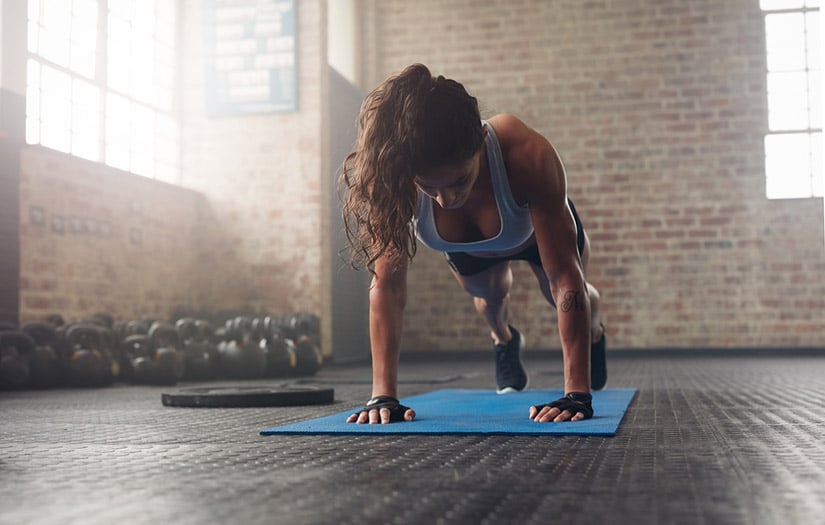A push-up is an exercise you can do anytime, anywhere, but only if you learn the how, what, when, and why of it.
Incredibly, this ONE exercise can help you torch calories, build and tone muscle, gain strength, and positively impact your overall fitness, function, and performance. Due to its versatility, mastering this exercise can be vital to unlocking your true fitness potential.
To help you master all things push-up, NASM is releasing a five-part series to help you explore and navigate the various facets of the movement.
Let’s begin the series by breaking down the muscles involved during the movement, as well as proper push-up form, technique, and more.
*Note: Because this series will delve into the specifics of programming, progressions, and specific phases of the the NASM OPT™ Model, it might help to first familarize yourself with various aspects of the NASM-CPT Course. You can find many resources on the blog and NASM website for further clarification.
The Flexibility and Power of Push-ups: An Introduction to Their Effectiveness
You may be wondering, “Are push-ups for me?” The great thing about push-ups is that with appropriate guidance and modifications, if necessary, they can be done by just about anyone—from fitness first-timers to high-level athletes to anyone in between.
Push-ups in their various forms can be used for multiple goals and outcomes such as improving upper body function and control as part of a rehab plan or corrective exercise routine; enhancing muscle development and definition; and building endurance, strength, and power to maximize functional fitness and performance.
Many fitness professionals and fitness enthusiasts often overlook the push-up because of its simplicity, but simple doesn't mean ineffective! When appropriately executed, just the basic push-up can be a cornerstone of a full-body exercise routine. And, considering the near countless ways to modify, regress, and progress push-ups, they can be a workout staple for just about anyone, at any point in their fitness journey.
Typically thought of as an upper-body only move, depending on the variation, push-ups can be extremely effective at challenging the core and lower body muscles too—virtually the entire kinetic chain (science term for, ‘from your toes to your head’).
However, attention to form and technique is paramount to reap maximum benefit for your muscles while minimizing the potential for pain and injury.
NASM is known for its focus on applying the science of how the body moves to fitness program development. So, in typical NASM fashion, to better understand the push-up, let's start to explore and dig into the anatomy of the movement itself. With any exercise, it’s helpful to know the muscles being used and what they do to perform it properly and effectively.
*Important Note Before Performing Push-Ups
At the National Academy of Sports Medicine, we highly recommend consulting an NASM Certified Personal Trainer to help you assess your current level of fitness and movement capabilities.
Working with a professional to assess your movement will help uncover potential muscle strength and flexibility imbalances that can prevent proper form and promote compensations that will negatively impact exercise performance and possibly lead to pain and injury over time.
How to Set up a correct standard push-up:
1. Hands should be slightly outside shoulder-width apart at chest level.
2. Feet should be hip-width apart and parallel to each other—not turned inward or outward.
3. Hips should be in line with the shoulders, and the lower back should have a neutral curve—not completely flat, but not overly curved either. To assist with keeping proper lower back alignment, slim your waistline by trying to pull your belly button in and tightening your abdominal muscles.
4. The head should be positioned so the ears are in line with the shoulders. They should not drop down toward the floor or looking up in front of the body.
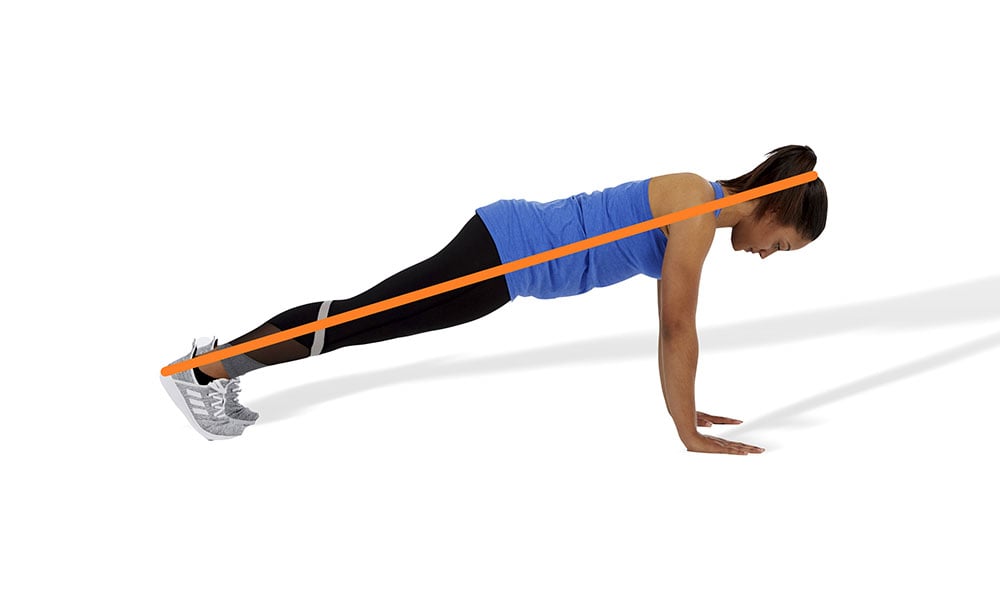
* You can also do this position on an elevated surface or a wall. Choose your position based on your goals, strength, flexibility, and ability to perform the desired number of repetitions without compensation.
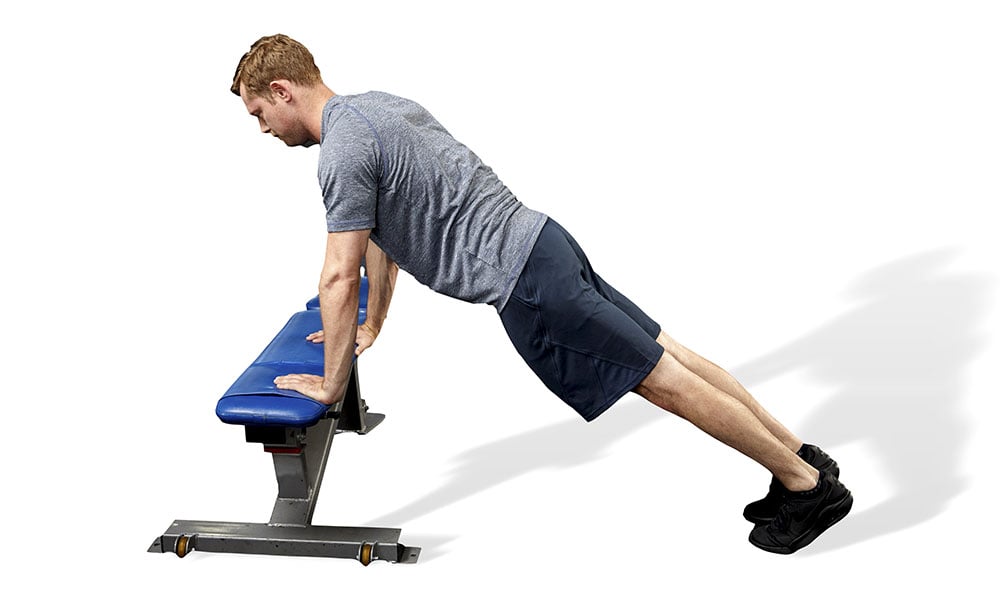
While monitoring your body to ensure the correct setup position is maintained, it's essential to engage some key muscles before beginning the push-up movement. This process helps facilitate the mind-body connection referenced earlier to the primary muscles/muscle groups used in the push-up.
How to Perform a Standard Push-up With Proper Form
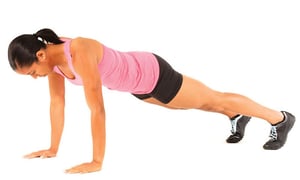
Beginning:
1. Engage the core (belly button to spine and tighten abdominals).
2. Squeeze the glutes.
3. Keeping pressure through the hands, bend the elbows to lower the chest, hips, and head toward the ground- together as one.
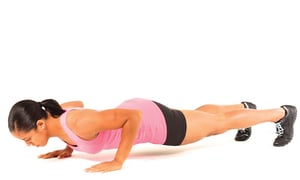
Middle:
1. Get as close to the floor or wall as possible (nose, chest and belly button should be at the same level/height).
2. Continue to squeeze the glutes and engage the core.
3. Keep constant pressure through the hands into the floor.
End:

1. Engage the pectorals and imagine you're pushing the ground away from you.
2. Keep your energy focused in your core and NOT in your toes.
3. Continue to push up, ending, and at available range of motion in the arms while engaging your triceps.
Quick Tip and Review: The Five Kinetic Chain Checkpoints
Let’s review what makes the perfect push-up. When cueing a perfect standard push-up, whether performed with hands elevated or from the floor, it's essential to set up the correct form and positioning considering the five kinetic chain checkpoints—a quick and easy reference guide to check your body alignment during exercise.
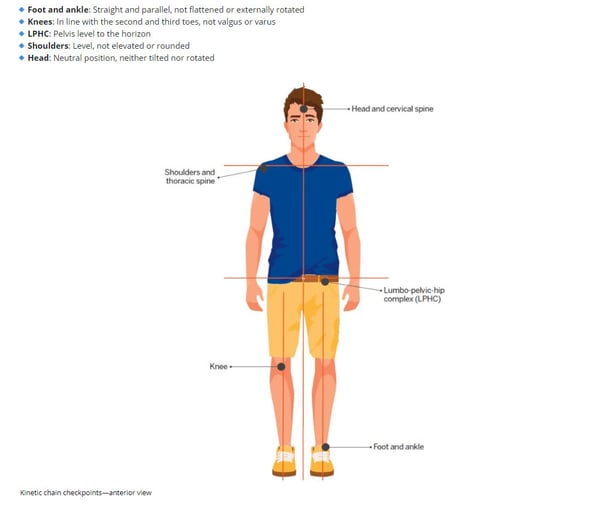
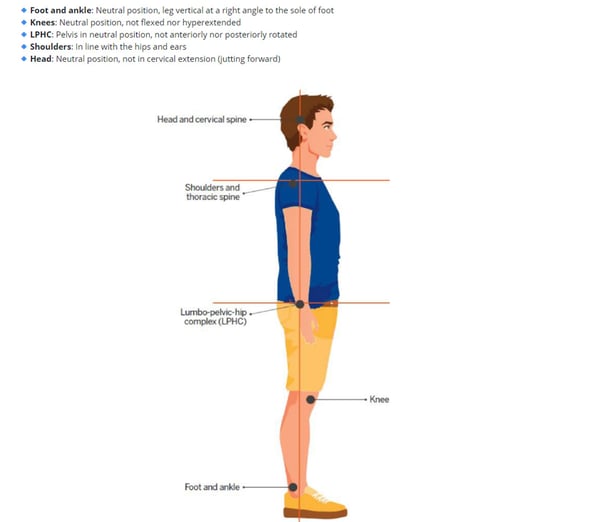
How to Do More Push-ups
A good challenge to learn how to do more push-ups would be to use a movement tempo of 4/2/1. Relative to the push-up movement, this tempo scheme would be applied by taking 4 seconds to lower your body to the floor or surface, pausing for 2 seconds in the “hover” or middle position (joint stability), and pushing up as strong and as fast as you can for 1 second.
Adjusting the tempo or speed of movement during exercises plays a significant role in how your body responds to your training. Longer tempos such as this force us to slow down and really move with intention while also increasing the time our muscles are kept under tension.
This tempo recommendation is standard for exercises used in Phase 1 of the NASM OPT Model and offers many benefits like enhanced body control and awareness, improved muscle development and connective tissue strength, endurance, and joint alignment and stability. Not easy by any means, performing push-ups in this way will ensure your muscles and joints are prepared for future progressions such as adding resistance or changing environments.
Determining a starting point appropriate for you to perform a standard push-up while maintaining proper form, body alignment, and tempo is key to progressing the push-up over time. Over the rest of this series, we’ll be able to discuss in detail how to make the standard push-up easier or more challenging, as well as add more variety through the use of different modalities/equipment, movement tempos, set and repetition ranges according to a specific goal.
The Muscles Worked with Push-Ups
Push-ups focus primarily on the following muscle groups:
• Pectorals (chest muscles).
• Deltoids (shoulder muscles).
• Serratus anterior, trapezius, and rotator cuff (posture and shoulder support muscles).
• Triceps (backside of the arm muscles).
• Core stabilizers (abdominals and spinal support muscles).
• Gluteals (hip muscles).
It may seem trivial, but overlooking an exercise's muscle anatomy can seriously impact results and slow-down your fitness progress. Awareness of a muscle group’s involvement in an exercise and focusing attention on it is essential to developing optimal neuromuscular control (essentially, mind and body connection to maximize form).
To achieve the best results from an exercise, our brain and nerves must send the appropriate signals to get the correct muscles (in their entirety) to activate. We’ll address this topic in more detail in part two of the series. Still, various factors can derail your body’s ability to do this, such as flexibility and mobility restrictions, previous or current injuries, and less than ideal posture and body alignment.
Tips for Choosing the Right Push-up for You: Use Assessments and Determine Goals!
As stated earlier, we can use push-ups for a variety of goals and with various individuals; however, to ensure optimal form and technique, the ability to maintain proper body alignment without compensation is paramount. Unfortunately, that’s easier said than done for most of us. Due to changes in how we, as a society, live, work, and play, it’s common for most people to have some alterations in body alignment and muscle balance that will make it more difficult to exercise and move without compensations.
While we’ve made a case for integrating push-ups into your routine as almost mandatory, it's essential to know your strength and movement capabilities.
Most importantly, acknowledging your current capabilities will help determine what types of push-ups you should start with.
When choosing what style of push-up(s) to include in your routine, you must select the option(s) that best complement your lifestyle, desires, and movement tendencies to ensure you not only get to your goal but do so pain and/or injury-free. Later on in this series, we will dig a bit deeper into how to choose push-up variations right for you.
Watch for the Other Parts of the NASM Five-Part Series On Push-ups!
This concludes part 1 of our 5-part series about push-ups. Part 2 of this series addresses common technique flaws associated with the push-up and what might cause them, and then highlight strategies to improve those compensations so you can ultimately get better at and progress your push-ups.

